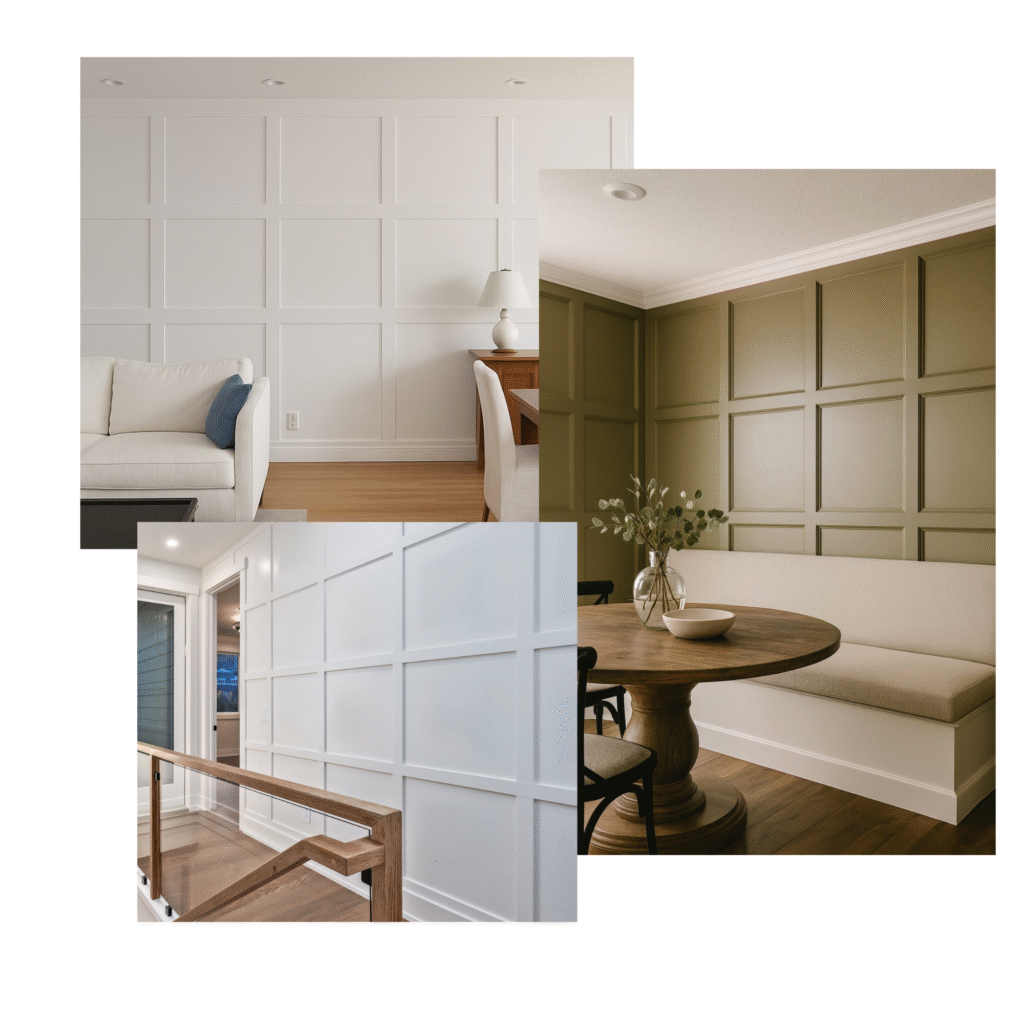Home Carpentry FAQs
Thinking about adding an accent wall to your home? You’re not alone. Accent walls are one of the most searched design upgrades because they’re simple, affordable, and can completely transform a space. Whether you’re choosing paint colors, deciding which wall to highlight, or wondering if accent walls are still in style in 2025, this FAQ has you covered.
We’ve gathered the most common questions homeowners ask—and answered them clearly—to help you make smart design choices for your space. From bedrooms and bathrooms to living rooms and dining rooms, here’s your go-to guide for accent wall ideas, rules, and best practices.
General
An accent wall is one wall in a room that’s painted or finished differently than the others to create a focal point.
Yes. Modern accent walls focus less on bright paint and more on texture—wood, trim, panels, or natural tones.
It creates a focal point, adds style affordably, and can make a space feel larger or more balanced.
Yes—if you use a darker tone on the far wall or vertical trim, it draws the eye and makes the space feel larger.
Placement
The wall behind your bed is best—it frames the headboard and anchors the room.
Usually the wall behind the sofa or the fireplace wall, since they’re natural focal points.
The main wall behind the dining table works best, creating a backdrop for the table and chairs.
The wall behind the vanity or the tub/shower is ideal—it draws focus to the room’s key feature.
Pick the wall your eyes see first when you walk into the room—usually the main focal wall.
Yes, but it works best if the wall is large enough to carry the design without being broken up too much.
Design & Style
The focal wall, usually behind a bed, sofa, or fireplace. A darker wall adds depth and contrast.
Always on the bottom—it grounds the room and makes it feel stable.
Keep most walls in a light, neutral color. Use the darker or bolder shade on one accent wall.
Yes. Two-tone walls with wainscoting or trim are very popular and give a modern, finished look.
Color drenching is when you paint everything—walls, trim, even the ceiling—the same color for a bold, seamless look.
Use three tones: one main color for most walls, a secondary color for trim or furniture, and one accent color for impact.
Choose one neutral as the base and one bold or darker tone as the accent. Make sure they contrast enough to stand out.
Not always. Painting all walls the same can feel flat. One accent wall adds focus and dimension.
Materials & Options
Yes—if the other walls are darker. A crisp white wall can act as an accent when used with contrast.
Yes. A lighter accent wall brightens a space and works well in small or dark rooms.
Yes. Gloss or satin finishes can make a wall stand out even in the same color as the others.
Options include shiplap, board and batten, fluted panels, or full wood cladding for warmth and texture.
Grey pairs with navy, green, black, or wood tones for contrast—or beige and white for softness.
Try charcoal, navy, or olive green for contrast. For subtlety, use cream or off-white.
Bold colors like navy, emerald, or black create drama. Natural wood also pairs beautifully.
Warm tones like beige or tan, or deep colors like navy and forest green, work well with Agreeable Grey.
Pairs well with earthy greens, soft greys, or dark blue for contrast.
Rules & Best Practices
Only one per room. Place it on the focal wall and ensure it ties into your overall color palette.
Pick the main focal wall, keep other walls neutral, and make sure the accent complements your furniture and decor.
No. It’s still popular, but today’s best accent walls use natural textures, rich tones, or wood trim instead of just bright paint.

